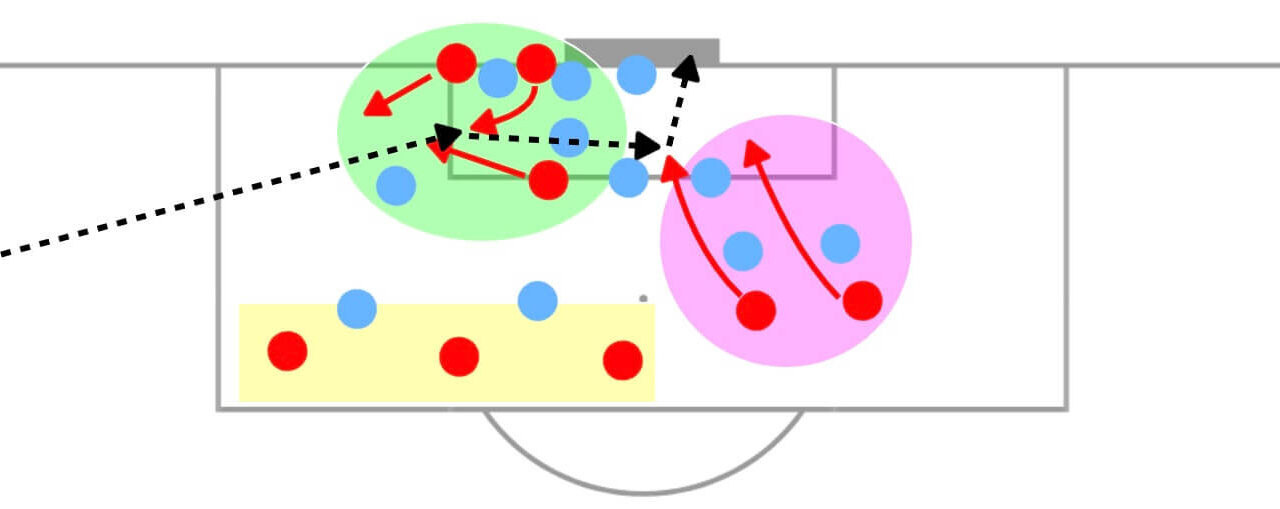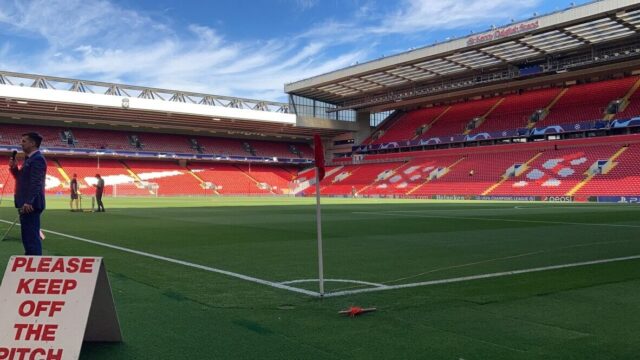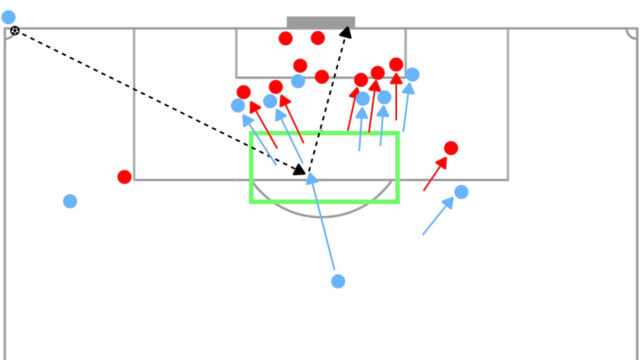Introduction
Over the last couple of articles, tactics of throw-in, which has been underrated compared with corner kicks or free kicks had been discussed. The first article about throw-in analysed tactics of Liverpool who employed throw-in coach Thomas Grønnemark, in the second article, some pieces of the academic research were referenced to suggest effective tactics of both attacking and defending throw-in and the detail of defensive tactics of throw-in was analysed in the previous article. Then, in this article, attacking throw-in tactics are going to be discussed by examining Maurizio Sarri’s actual throw-in training and analysing Brentford’s tactics of long throw-in. I hope you enjoy this.
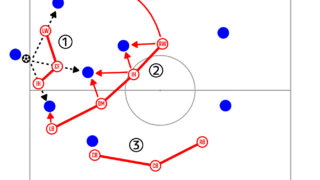
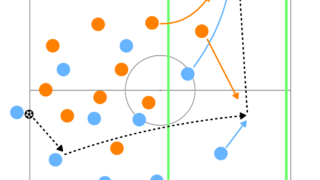
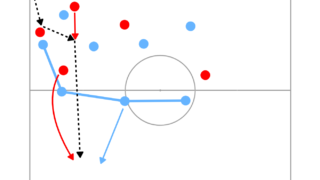
Sarri’s Throw-in Tactics
Many people have already analysed the footage of throw-in training conducted by Sarri at Napoli on their YouTube channels or in blogs. However, their focus is mainly on describing each routine. It is only possible to copy them by memorising the routines, but in my article, the principles behind them are going to be analysed. This is because it is possible to create new routines or nullify their defensive measure against a preplanned routine by understanding the principles.
First of all, the number of players in each area is important when planning attacking throw-in routines. As far as the footage shows us, Sarri deployed three players in the box and two players in the wide area with a thrower. Considering he played with a 4-3-3, it can be assumed that the players positioned themselves in the shape illustrated below.

The right fullback throws the ball in and the right attacking midfielder and right winger try to receive it in the wide area, the striker, left attacking midfielder and left winger stay in the box to score from a cross and the defensive midfielder, left fullback and both centre backs form the defensive structure to manage opposition counterattacks or second balls.
In general, the balance of the number of players in these three areas is important when throwing the ball in the final third. If too many players are in the wide area, the number of players in the box decreases and the chance after a cross is delivered will be lower. On the other hand, if too many players stay in the box, the defensive structure might be fragile and it becomes difficult to manage the opposition counterattacks. Thus, the balance is extremely important and Sarri’s formation is numerically well balanced.
Then, his tactics are going to be examined to find out the principles behind them. From the routines shown in the footage, it is possible to find three situations, which are creating a space for the thrower, creating a space for one of the two receivers in the wide area and creating an overload with the striker joining the wide area. Additionally, this is my assumption and analysis though, these three categories might depend on the opposition defensive type. The reason of creating a space for the thrower could be there is no defender marking him, and when the thrower is marked, the two receivers create a space for one of them. In the case when the opponents defend zonally to occupy the space, creating an overload is a great solution. Therefore, his tactics are going to be analysed based on three situations.
No Defender Marking the Thrower
When no opponents are in front of the thrower, as soon as he throws the ball in, he can be a spare player. Therefore, he can cross the ball into the box by just receiving the return pass, but Sarri has explored the way to change the angle to deliver a more difficult cross for the defenders.
When the receivers in the wide area are marked by the opposition defenders, they are expected to follow the movements of the receivers. In other words, they can intentionally move the opponents to create a space for the thrower. The illustration below shows one of the examples.

By dragging the opposition markers against the receivers out to create a space in a deeper area of the pitch, the thrower can deliver a cut-back which is difficult for the opposition defenders in the box to deal with.
Since there are no defenders for the thrower, the spare defender is in the box to defend a cross (or up front to play a counterattack). Therefore, it is difficult to penetrate into the box. However, changing the angle can force the defenders to turn their body or scan different things again, the probability that the attackers lose the markers can be higher.
Additionally, another key factor is the number of players in the wide area. If there are three or four players in the wide area to receive the ball, the space for the thrower becomes smaller. Thus, as Sarri did, two players in the wide area are the best formation because it can provide enough space for the thrower and also secure the enough numbers in the box to receive the cross.
A Defender Marking the Thrower
On the other hand, when the thrower is marked by a defender, it is difficult to let him free to deliver a cross, although it is not impossible. In this case, since a defender steps out to mark the thrower from the inside of the box, the likelihood of finding a gap in the box increases. Thus, two receivers work together to create a space for one of them.

The key factor to create a space according to Sarri’s training is setting a screen. The detail of the tactic of a screen was already discussed in the article below in the context of corner kicks, so please read it to know it deeply.
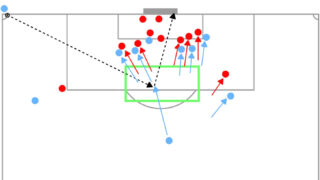
The way they set a screen is mainly shuffling each position at the same time. However, as a variation, they run away from each other at the same time initially and then change the direction 180 degree to cross each other with setting and using a screen. This can confuse the markers more.
A Defender Marking the Thrower
The final method is one of the attackers moves towards the ball to receive and lay it off to one of the receivers. This is assumed to be a routine against a zonal defending. When the opposition team defends throw-in with a zonal setup, it is difficult to create or find a huge gap to deliver a cross. However, as receiving the ball in between the lines is an effective way to break down the zonal defence in the open play, it can work in throw-in situation.

By throwing the ball to the striker, the defenders cannot still keep their eyes on the receivers, so they can receive the ball laid off by the striker behind the line of defenders in the wide area. This can work when the opposition team defends with man marking too, but especially against the zonal setup, this idea can be crucial because it is difficult to create a space like it could against man marking when they follow the movements of the receivers.
Brentford Long Throw-in Tactics
So far, Sarri’s tactics of attacking throw-in in the final third were discussed in three situations. However, what he does not cover but quite effective tactic is long throw-in. Brentford is one of the best clubs in England to utilise effective routines of set pieces and they have a clear tactic of long throw.

The basic positions are illustrated above. Three target players position themselves at the first post to flick the ball, two players wait for attacking the ball flicked by one of them at the back post and three players at the edge of the box are ready for securing second balls in the box.
The ball is usually thrown towards the first post, but there are mainly two reasons. Firstly, it is physically hard to throw the ball to the far side. Secondly, even though the ball can reach the back post, unlike the kicked ball, it is slow, so the professional goalkeeper can easily claim it. Therefore, throwing the ball to the near side and aiming to flick it in front of the opposition defenders and goalkeeper is the main strategy for Brentford.
The two players at the far post often wait for the ball flicked and start to move later. The main reason for this is to make it possible to attack the ball. It is difficult to predict exactly where the ball drops, so if they are already in the goal area, they cannot react to the ball flicked away from the goal. On the other hand, thanks to their late movement, they can run towards the ball after seeing where the ball is likely to drop and strike it to the back of the net. Additionally, this late run is difficult for the defenders to mark. As soon as the ball is thrown, the defenders often see the ball rather than the defender. Thus, the defenders cannot find them if they start to move after the ball is thrown.
The three players at the edge of the box are also important. They are ready for securing the second balls after the ball is cleared at the first post. Since most of all outfield players are positioned in the box, managing the second ball really matters. The reason why they are tilted to the near side is that the thrown ball is slow and the power of a clearance is weak, so the second balls are expected to drop there.
This strategy can be copied by most of all teams if someone can throw the ball at least 25m. Since it can cause chaos in the box, it does not need a great striker in the box, but only luck matters. Thus, to be prepared for this to maximise the luck is extremely important and it can make a difference.
Conclusion
Throw-in is one of the most underrated set pieces in the game, but by knowing how to create chances to score a goal, the view can be changed. I hope this article helps you to change the view of throw-in. Thank you for reading.
